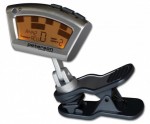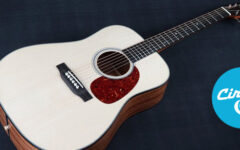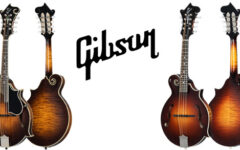 Since they were first introduced in the 1930s, musicians have regarded strobe tuners as the most accurate devices for obtaining an objective tuning reference. The early examples of this sort of tuner were expensive and cumbersome, and not practical for touring bands.
Since they were first introduced in the 1930s, musicians have regarded strobe tuners as the most accurate devices for obtaining an objective tuning reference. The early examples of this sort of tuner were expensive and cumbersome, and not practical for touring bands.
They used a series of mechanical wheels, spinning at a fixed rate, which were then compared to lights flashing at the frequency of an audio input. When the input was perfectly matched to the target note, the disc would appear to stop spinning, making very fine adjustments in tuning much easier. This is the same technology used to calibrate turntable speeds back when people used such archaic equipment.
The more general acceptance of strobe tuners began in 1967 when Peterson first manufactured a solid state device that did not require regular calibration, and which were powered by batteries for portability. Still a bit pricey, they became standard equipment in recording studios and with touring bands, even though the tuners were delicate and required the user to set the target pitch manually.
The 1990s saw the introduction of microprocessor-based strobes and the advent of automatic pitch selection, and more recently Peterson has offered Virtual Strobe technology which effectively mimics the action of the mechanical tuners using an LED display. Purists insist that this virtual technology is not as accurate when dealing with partials, but it has revolutionized the market, and brought the price of strobe tuners down to where the average music student can afford them.
Smaller tuners are available as foot pedals, hand held devices and even software for use on computers and iPhones.
 Peterson recently sent us one of their StroboClip tuners for review, a device that attaches to the peghead of a stringed instrument like so many similar tuners on the market today. It uses this Virtual Strobe technology, and I have found it to be a very accurate, effective and user-friendly tuner over the course of several weeks of testing.
Peterson recently sent us one of their StroboClip tuners for review, a device that attaches to the peghead of a stringed instrument like so many similar tuners on the market today. It uses this Virtual Strobe technology, and I have found it to be a very accurate, effective and user-friendly tuner over the course of several weeks of testing.
If you’ve never used a strobe, it may take a few minutes to acclimate yourself to its function, but the display is very stable and will be immediately familiar to anyone who has used a strobe in the past. It worked flawlessly for me both at home and on stage, even in a noisy club environment. The LED display is easy to read, and Peterson has included many of the features that have made their Virtual Strobe tuners so popular.
The StroboClip will select the closest pitch in the chromatic scale as soon as you pluck a string, and has an auto-shutoff function to conserve battery life. It also has a sustain mode that will keep a note displayed until the next time it is sounded, and Peterson’s Sweetener presets, which allow the user to choose among 15 temperament “compromises.” These presets attempt to account for the inherent tuning issues of specific instruments, and include settings for guitar, banjo, mandolin, violin and resonator guitar.
The retail price for the StroboClip is $89, but they routinely sell for as much as $20 below that list price. You can find more details, and a list of dealers, on the Peterson site.







